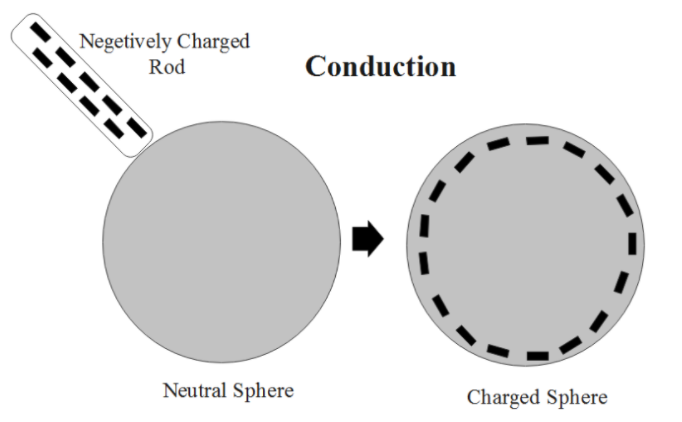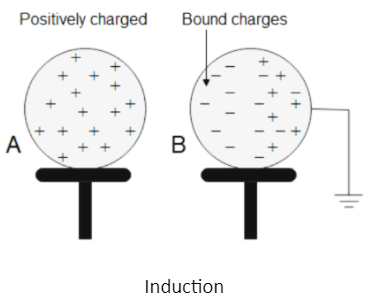
What is the difference between conduction and Induction?
Answer
501.3k+ views
Hint: Conduction is that the process by which heat is transmitted through collisions between neighboring atoms or molecules. Conduction occurs more fastly in solids and liquids, where the particles are closer to each other, than in gases, where particles are further apart. The speed of energy transfer by conduction is higher when there's a large temperature difference between the substances that are in touch.
Complete step-by-step solution:
The major difference between the conduction and the induction is that during conduction there should be a physical contact between the bodies while in case of induction, the charge can be induced even through a distance.
There are some other differences that are as follows
During conduction after transferring of charge there's a decrement within the first body while in induction charges remain an equivalent for both objects.
For conduction gradient path is required to flow of current while in induction no gradient path is required.
During conduction the current that flows in both the bodies has the same direction but different magnitude. In induction the same current flows within the bodies but with the various directions.
Conduction is the process through which current flows because of the electric field, while induction current flows because of change in the magnetic field.


Note: There are a range of methods to charge an object. One method is known as induction, within the induction process, a charged object is brought near but not in contact physically to a neutral conducting object. This will induce electrons within the conductor to maneuver. The movement of electrons leaves an unevenness of charge on opposite sides of the neutral conductor. While the general object is neutral
Complete step-by-step solution:
The major difference between the conduction and the induction is that during conduction there should be a physical contact between the bodies while in case of induction, the charge can be induced even through a distance.
There are some other differences that are as follows
During conduction after transferring of charge there's a decrement within the first body while in induction charges remain an equivalent for both objects.
For conduction gradient path is required to flow of current while in induction no gradient path is required.
During conduction the current that flows in both the bodies has the same direction but different magnitude. In induction the same current flows within the bodies but with the various directions.
Conduction is the process through which current flows because of the electric field, while induction current flows because of change in the magnetic field.


Note: There are a range of methods to charge an object. One method is known as induction, within the induction process, a charged object is brought near but not in contact physically to a neutral conducting object. This will induce electrons within the conductor to maneuver. The movement of electrons leaves an unevenness of charge on opposite sides of the neutral conductor. While the general object is neutral
Recently Updated Pages
Master Class 12 Business Studies: Engaging Questions & Answers for Success

Master Class 12 Economics: Engaging Questions & Answers for Success

Master Class 12 English: Engaging Questions & Answers for Success

Master Class 12 Maths: Engaging Questions & Answers for Success

Master Class 12 Social Science: Engaging Questions & Answers for Success

Master Class 12 Chemistry: Engaging Questions & Answers for Success

Trending doubts
What are the major means of transport Explain each class 12 social science CBSE

Which are the Top 10 Largest Countries of the World?

Draw a labelled sketch of the human eye class 12 physics CBSE

How much time does it take to bleed after eating p class 12 biology CBSE

Explain sex determination in humans with line diag class 12 biology CBSE

Differentiate between homogeneous and heterogeneous class 12 chemistry CBSE




